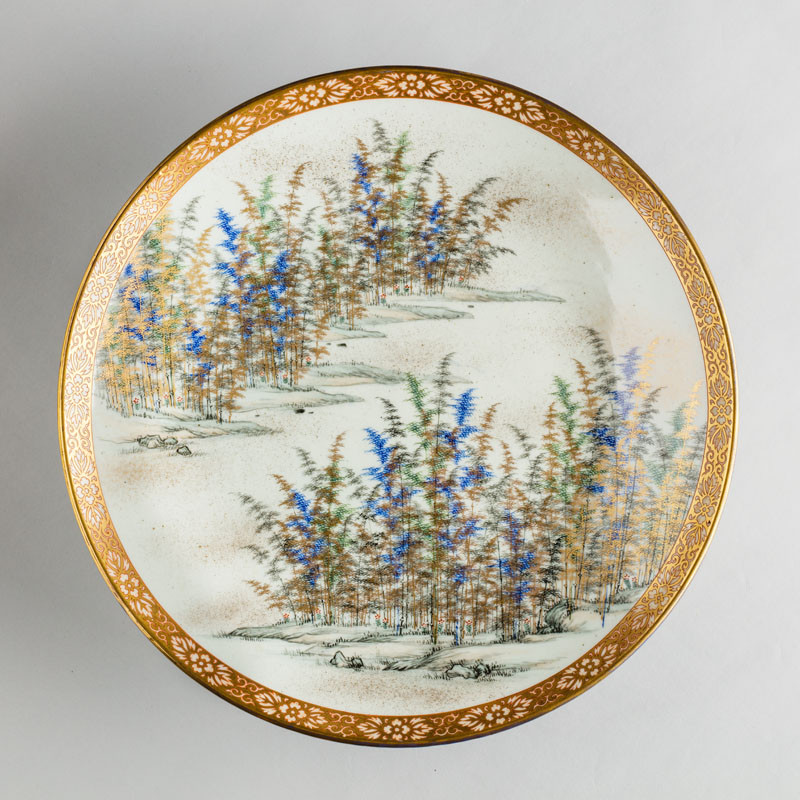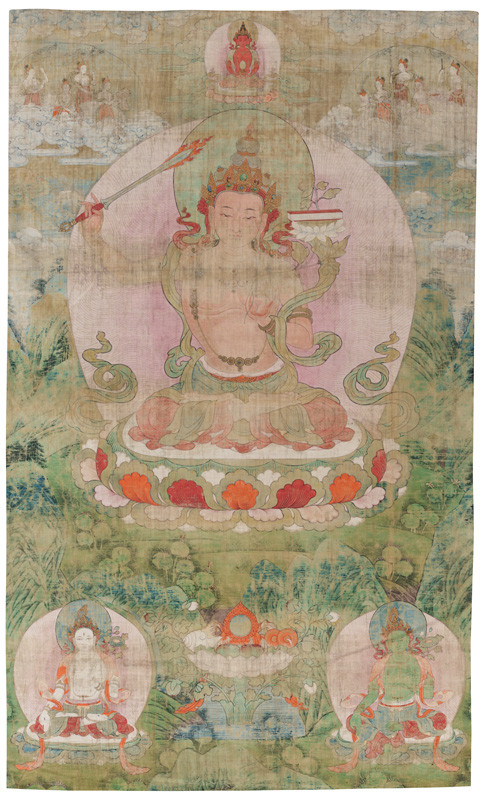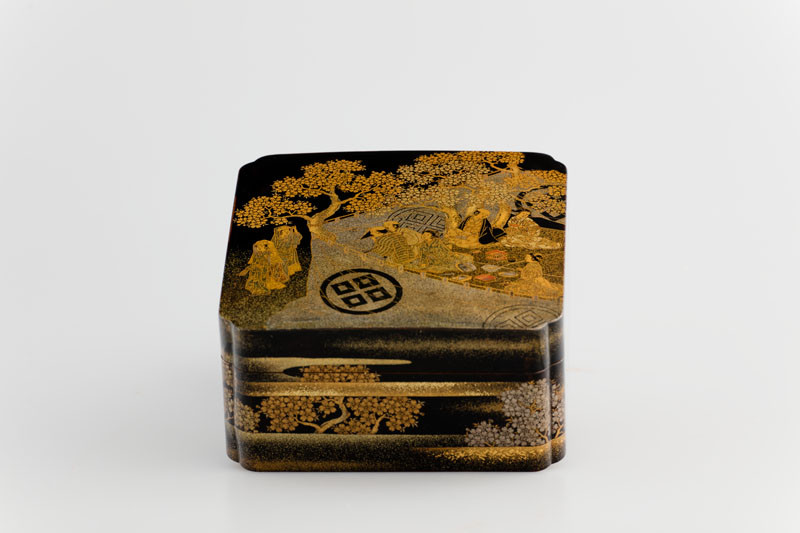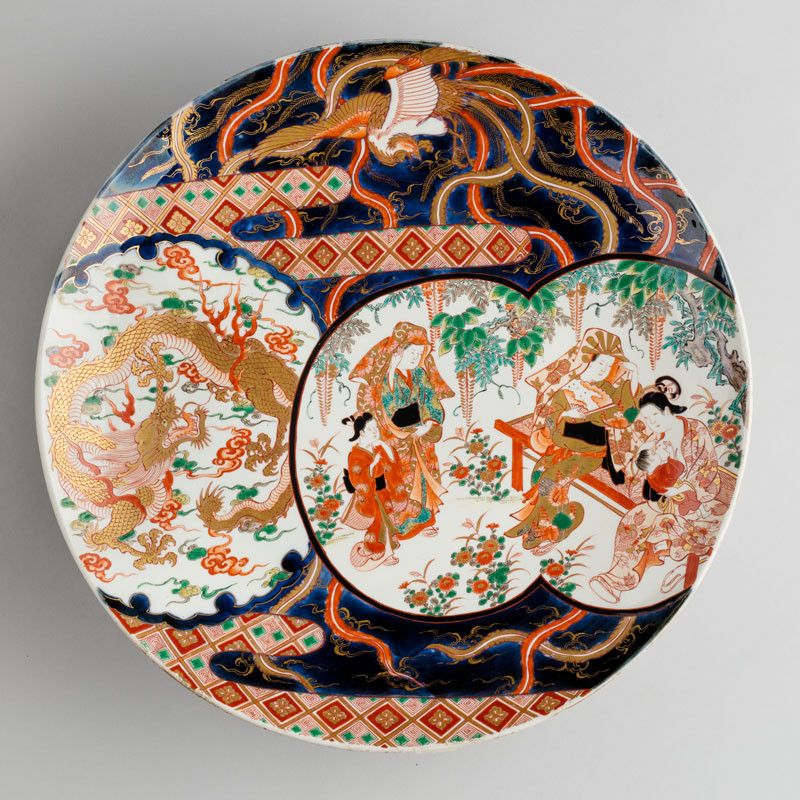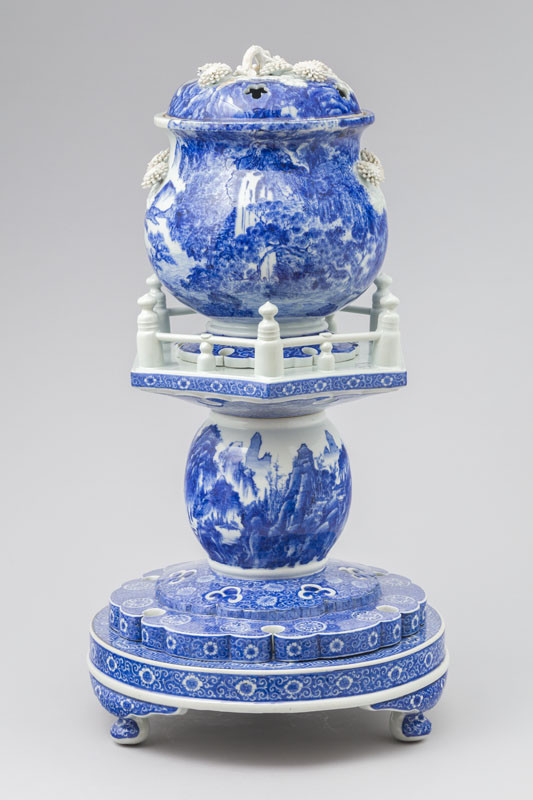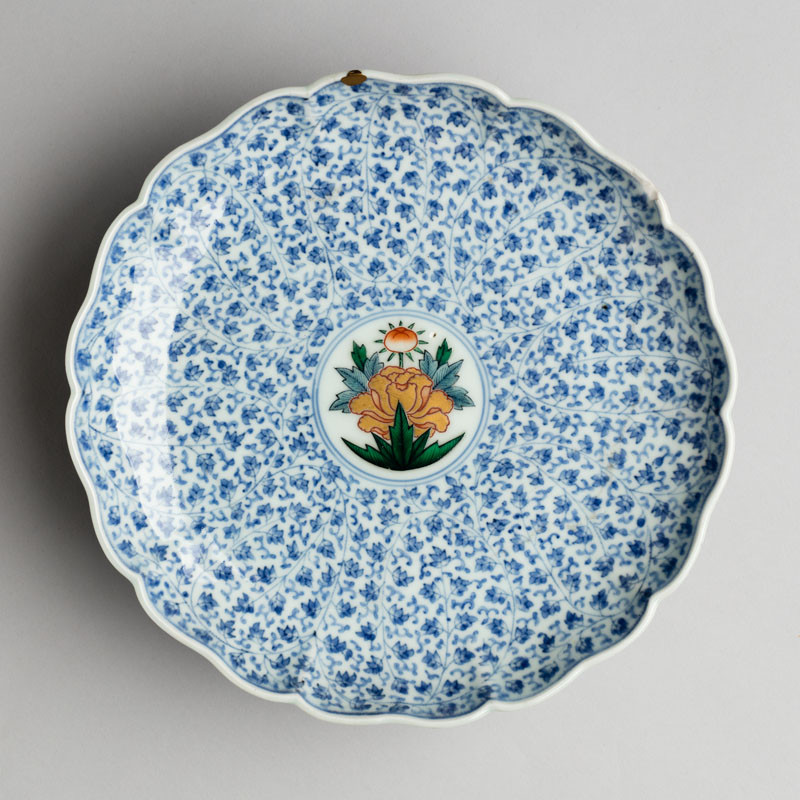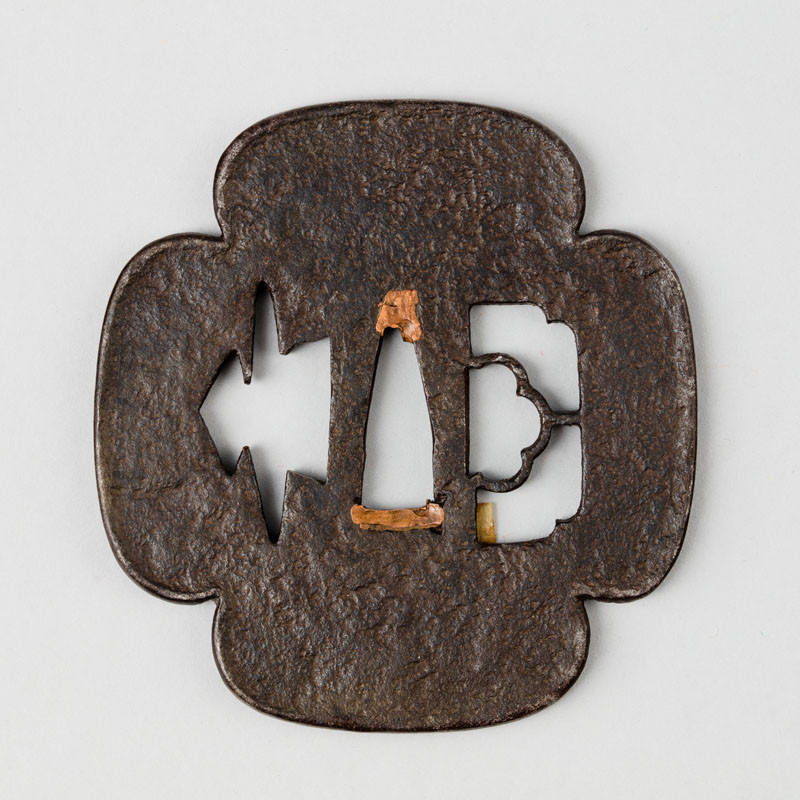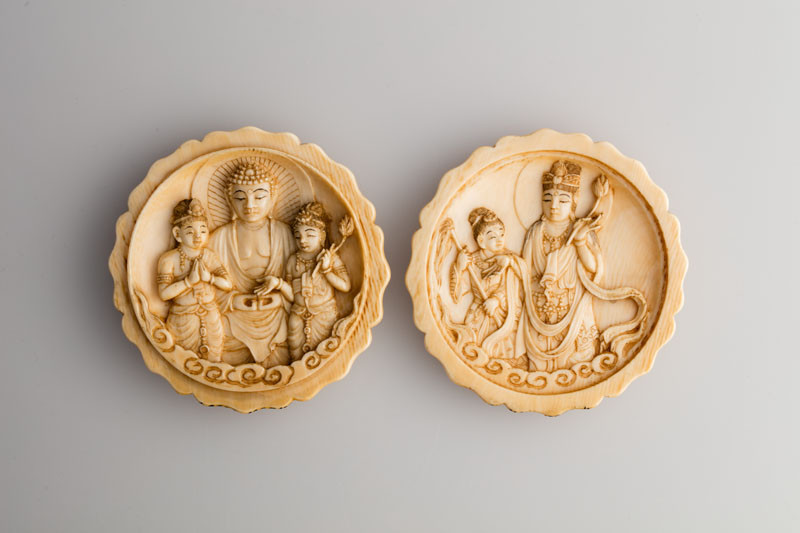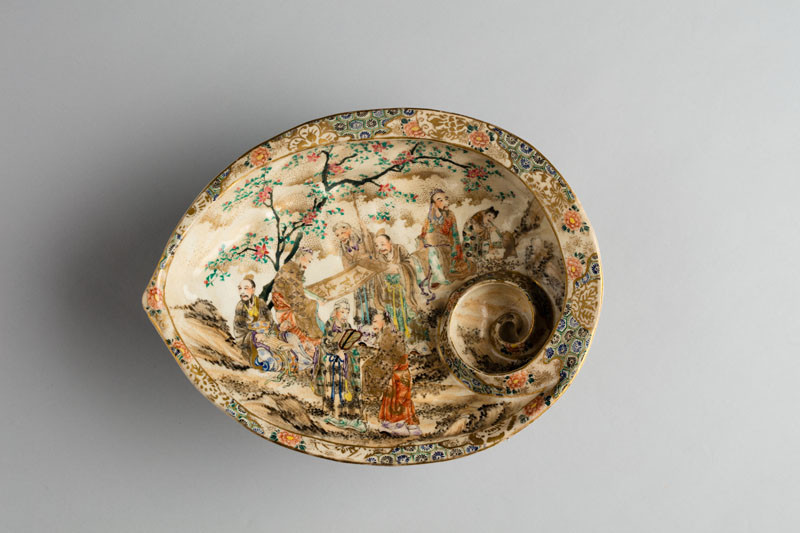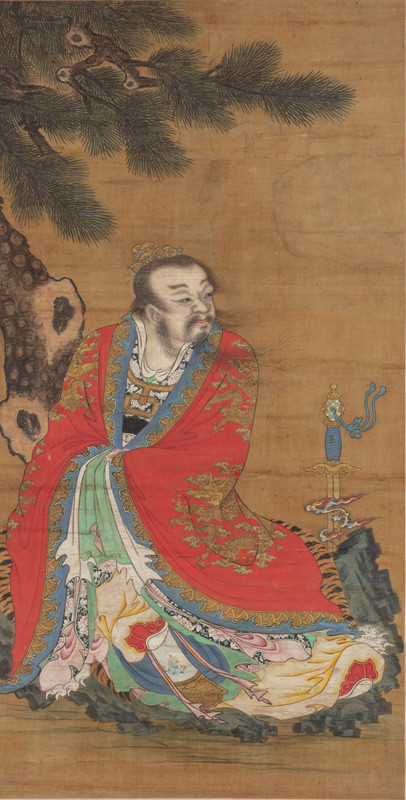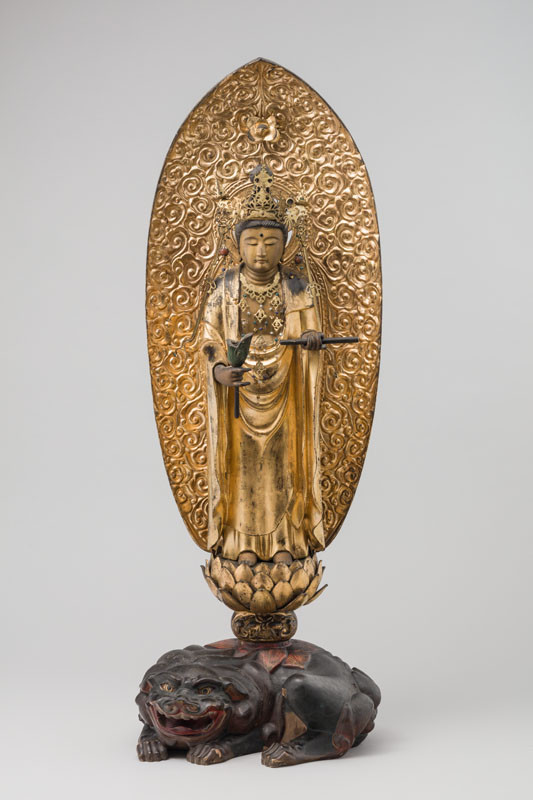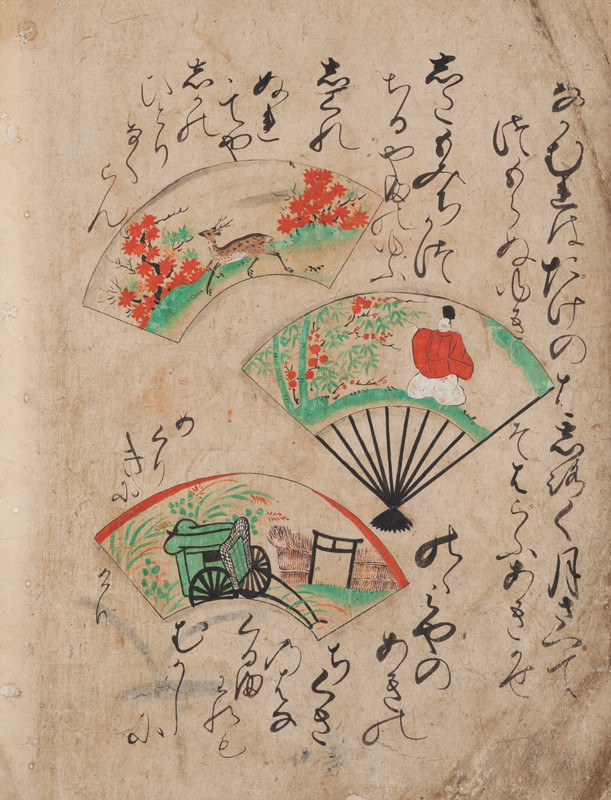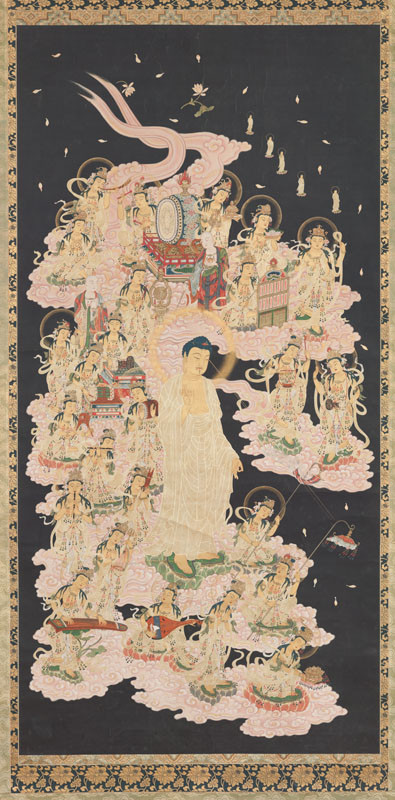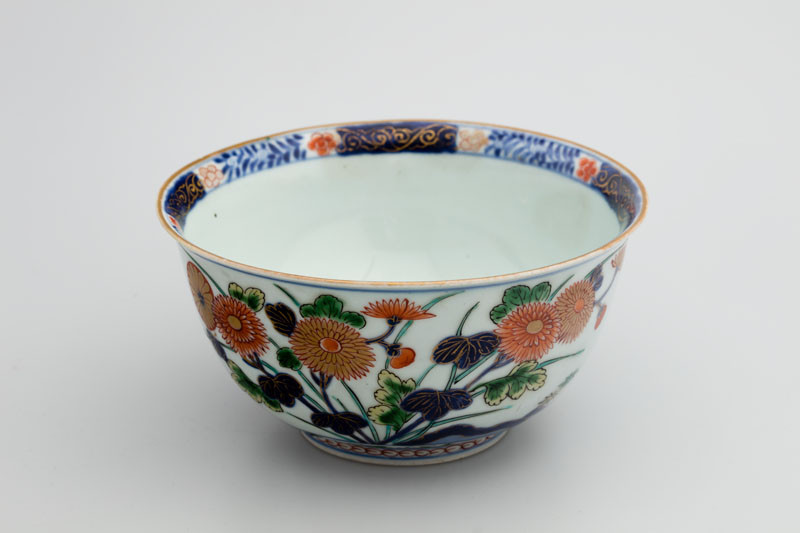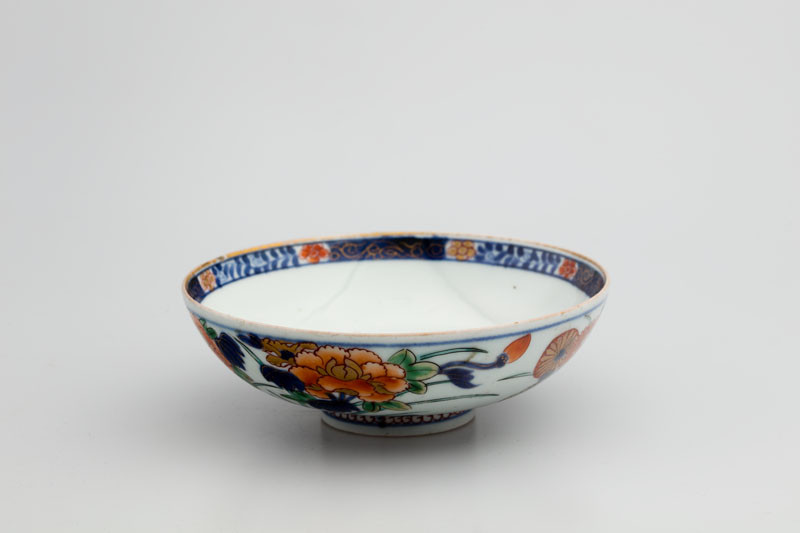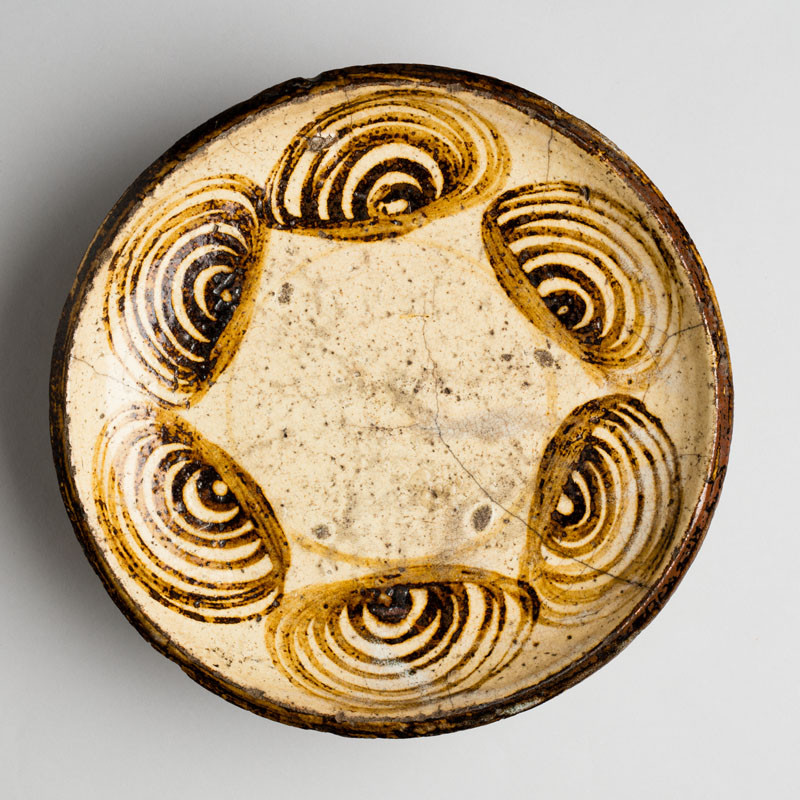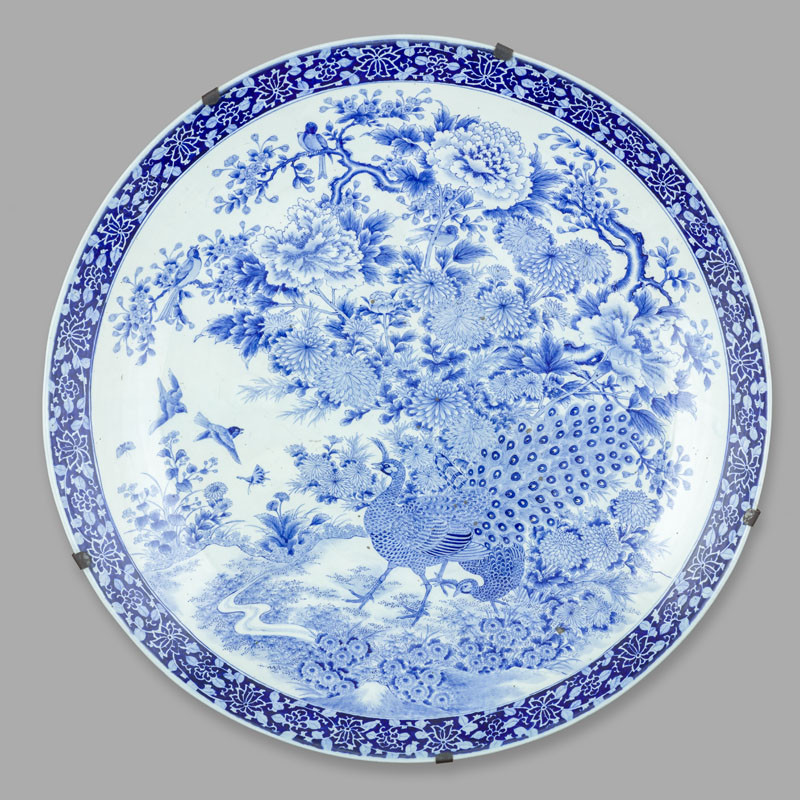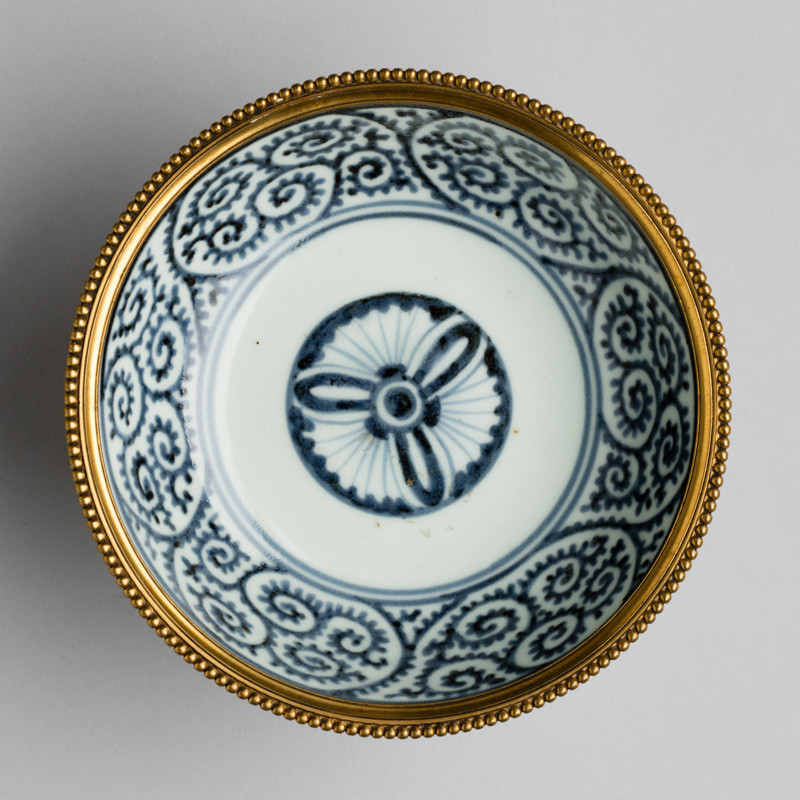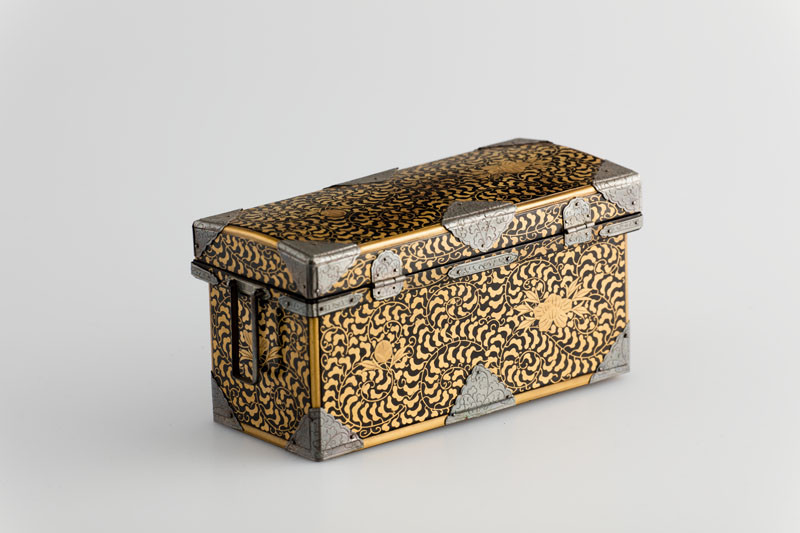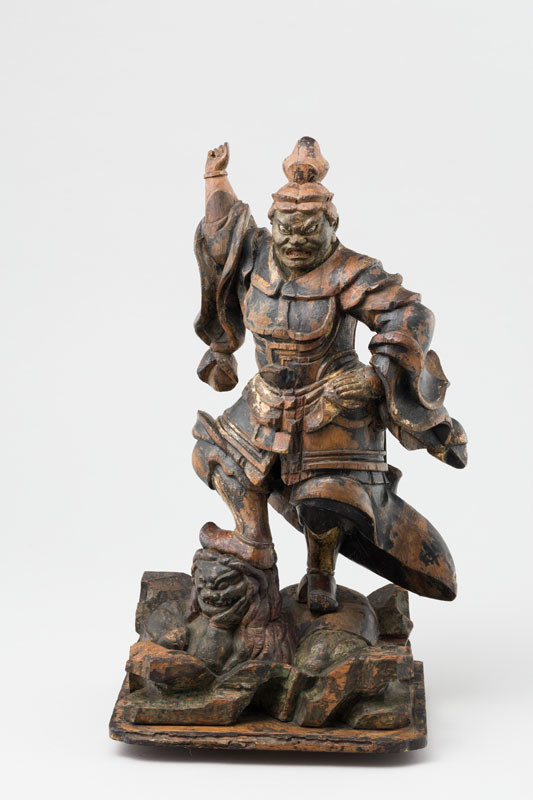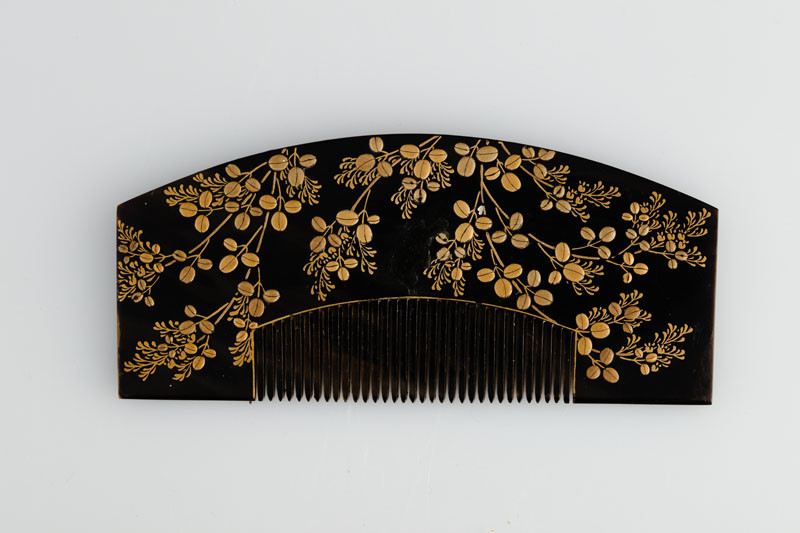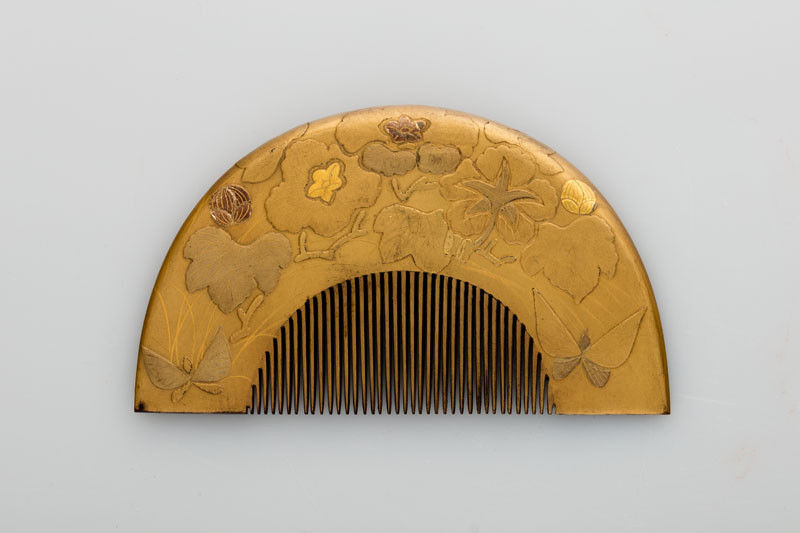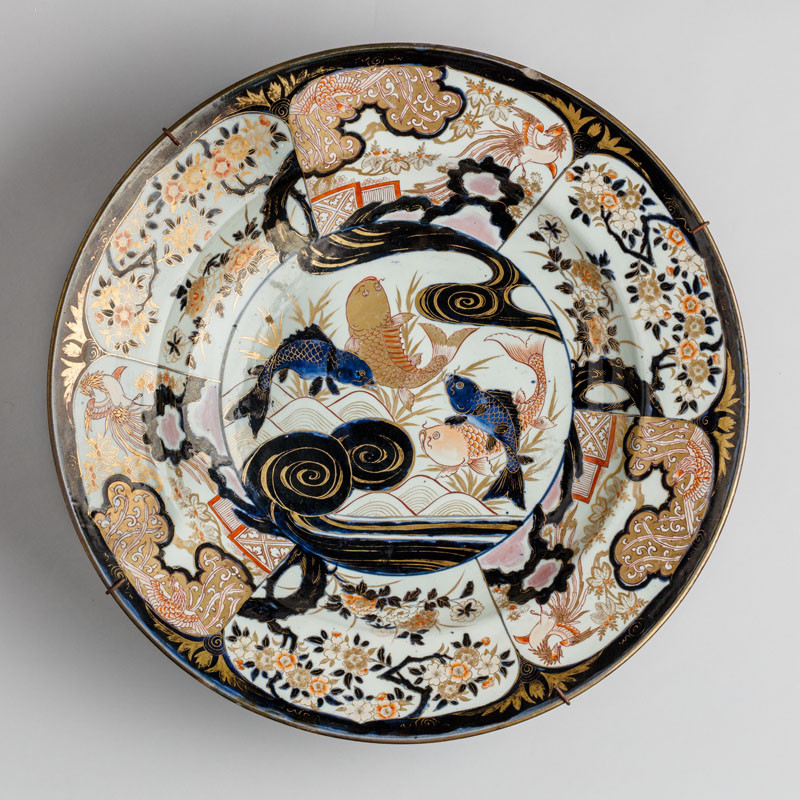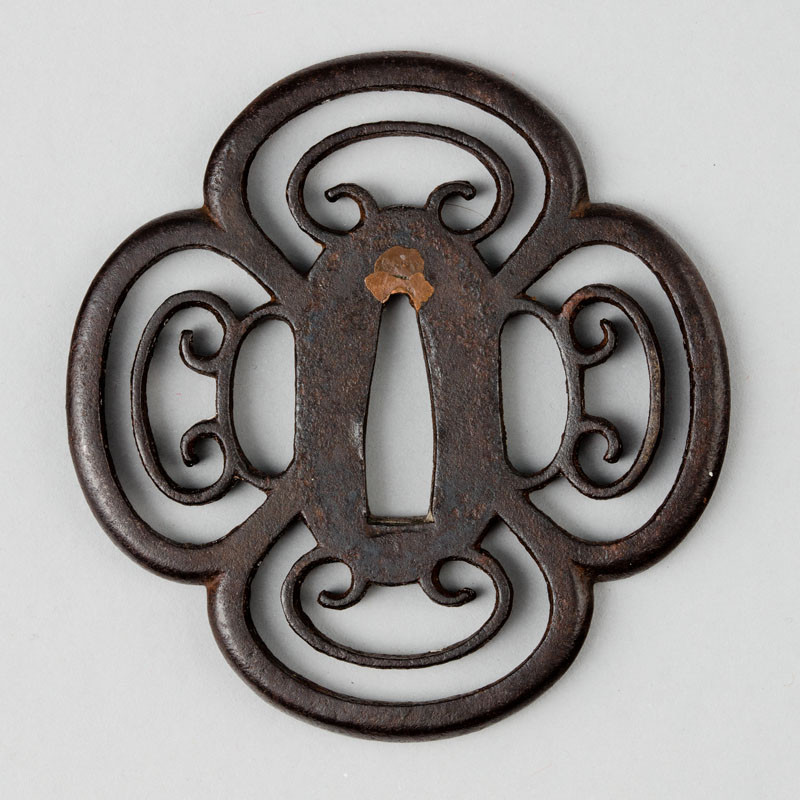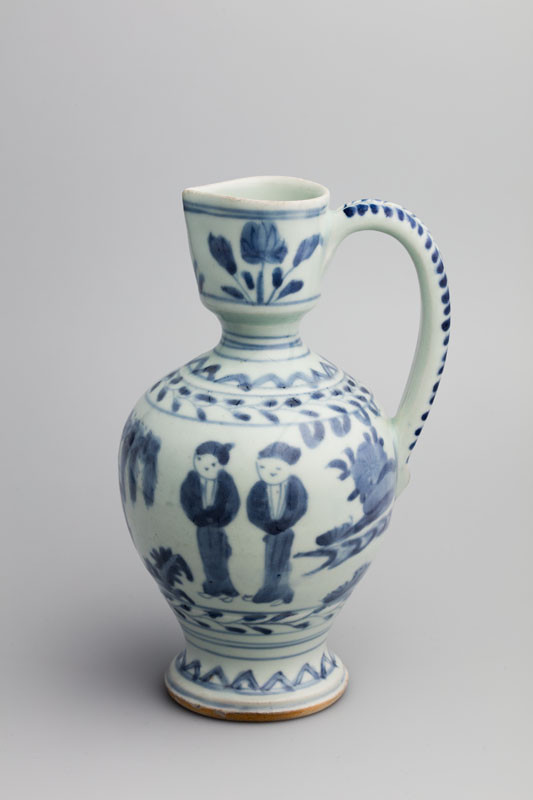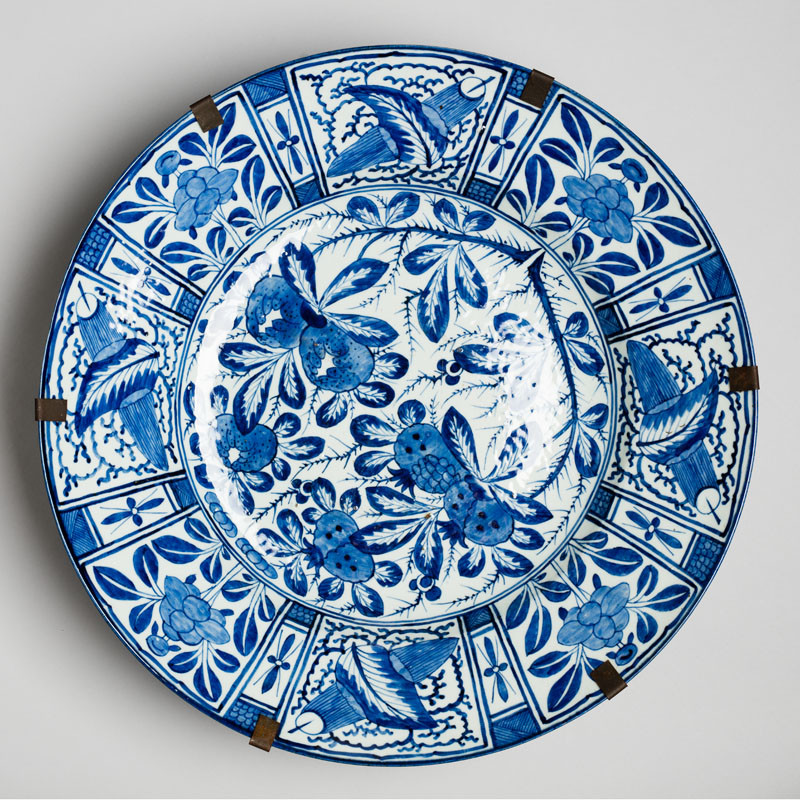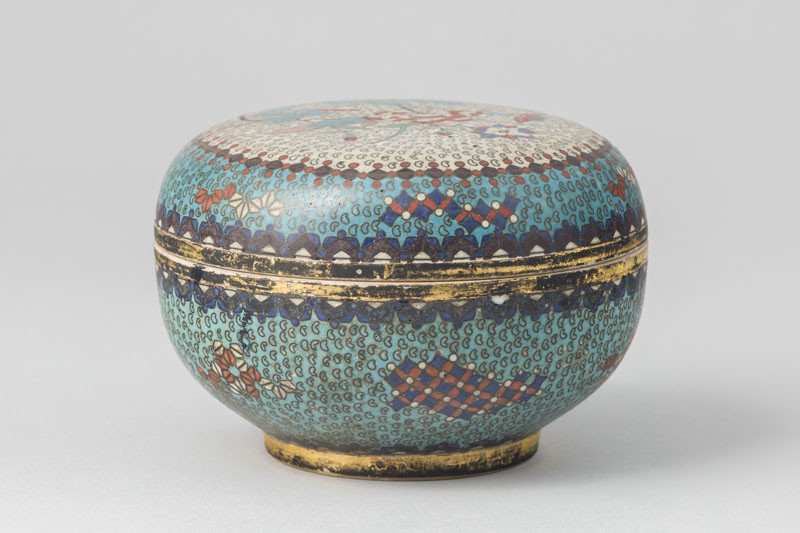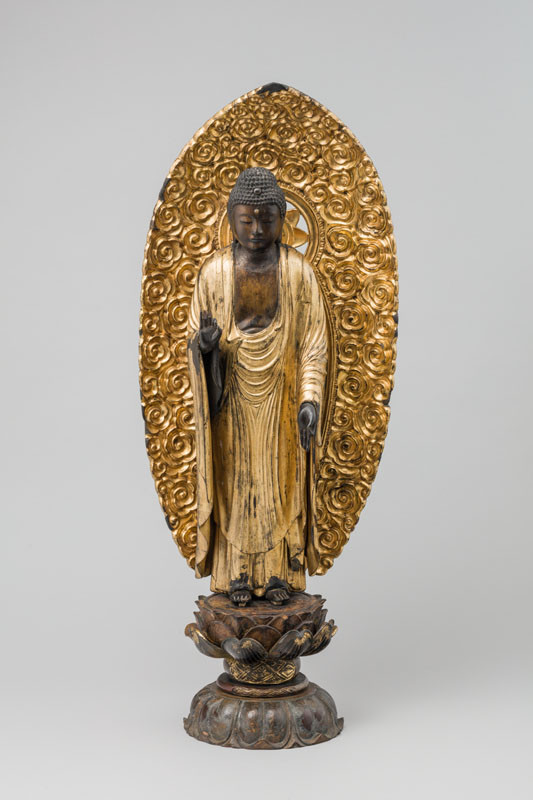
The cult of the compassionate Amida Buddha was spread in Japan especially by the Pure Land sect (Jōdō shū) and the new True Pure Land sect (Jōdō shinshū), which simplified the formerly complex rituals into a comprehensible invocation of the Buddha’s name. The statue holds its hands in the gesture raigō-in, i.e. of the Buddha’s descent to Earth, which welcomes the dying believers in the Western Paradise of the Pure Land (especially in Buddhist paintings). The figure is made in the wood joining technique yosegi, the base is composed of several parts and the halo was added later. The aura with the decorative motif of clouds dates from the 18th century and was not part of the original statue – this is corroborated by the fact that it is not attached behind the head, but behind the neck. It was probably part of a smaller figure.

